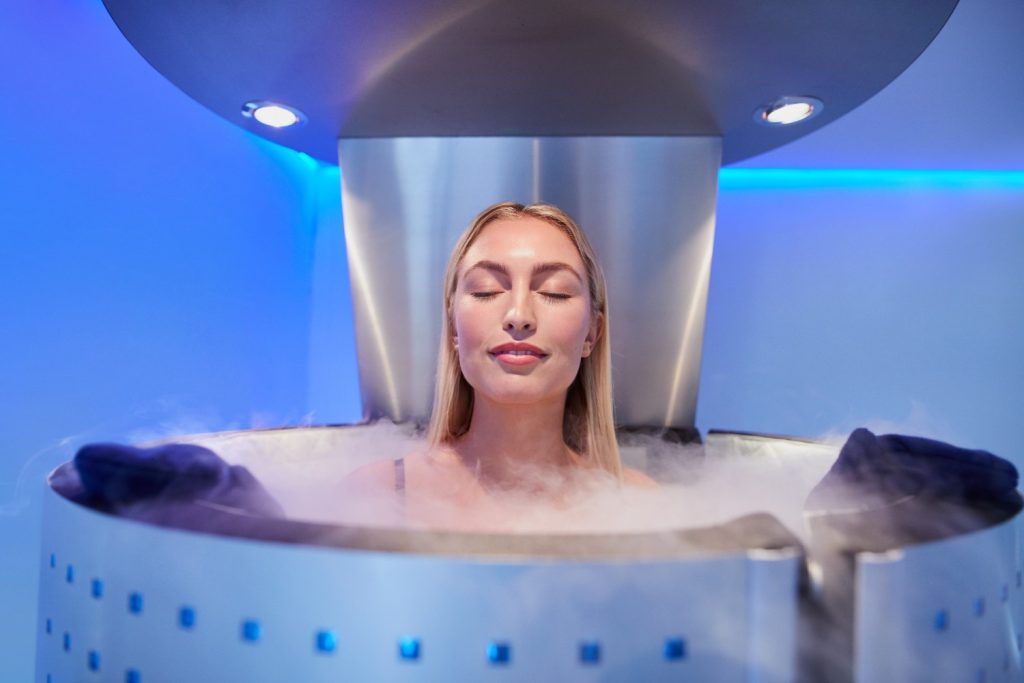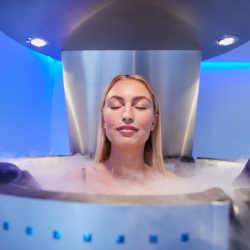
Cryotherapy tanks, chambers reaching bone-chilling temperatures of -110°C to -196°C, have become a trendy wellness phenomenon. Athletes swear by them for pain relief and recovery, while others tout their benefits for improving sleep, mood, and even boosting metabolism. But what does science say about the medical uses of cryotherapy tanks? Are they more than just a chilly fad?
Benefits and Their Backings:
- Pain relief: Several studies show promise for cryotherapy’s ability to alleviate pain. A 2020 review in the Journal of Pain Research found evidence for its effectiveness in managing chronic pain conditions like osteoarthritis, rheumatoid arthritis, and fibromyalgia. The cold exposure is thought to trigger the release of endorphins, the body’s natural painkillers, and reduce inflammation.
- Muscle recovery: Athletes often use cryotherapy tanks to speed up recovery after strenuous workouts. Research suggests it may reduce muscle soreness and improve function following exercise. A 2018 study in the Scandinavian Journal of Medicine & Science in Sports reported decreased muscle fatigue and enhanced performance in runners after cryotherapy sessions.
- Mental health: The potential benefits of cryotherapy extend beyond physical pain. Some studies suggest it may play a role in managing anxiety and depression. A 2019 study in the journal Frontiers in Psychiatry found that whole-body cryotherapy significantly reduced depressive symptoms in patients with treatment-resistant depression. However, more research is needed to confirm these findings.
Cost and Considerations:
While the benefits seem promising, cryotherapy isn’t cheap. A single treatment can cost anywhere from $50 to $200, depending on the facility and duration. Insurance typically doesn’t cover it, although some medical centers may offer it as part of a pain management program.
Risks and Cautions:
It’s important to remember that cryotherapy isn’t without risks. Potential side effects include cold burns, frostbite, and tingling or numbness. People with certain medical conditions, like heart disease or Raynaud’s syndrome, should avoid cryotherapy due to potential complications. Pregnant women and young children should also consult their doctor before considering this treatment.
The Verdict:
The jury is still out on the full extent of cryotherapy’s medical benefits. While research shows promise for its role in pain relief, muscle recovery, and even mental health, more high-quality studies are needed to confirm its efficacy and long-term safety. If you’re considering taking the plunge into a cryotherapy tank, it’s crucial to discuss it with your doctor, prioritize reputable facilities, and be aware of the potential risks and costs involved. Remember, cryotherapy should be seen as a complementary therapy, not a substitute for other evidence-based treatments.
Beyond the Tank:
It’s important to note that cryotherapy doesn’t have to involve taking a deep dive into a freezing chamber. Localized cryotherapy, using cold packs or sprays, can deliver similar benefits for pain relief and inflammation reduction, often at a much lower cost. Consult your doctor or physical therapist to explore the best cryotherapy option for your specific needs.
So, before you brave the chill of a cryotherapy tank, remember to weigh the potential benefits and risks, make informed decisions based on your individual health, and explore more accessible alternatives when available. The world of cold therapy is still evolving, and it’s up to us to navigate it with a healthy dose of research and skepticism.


